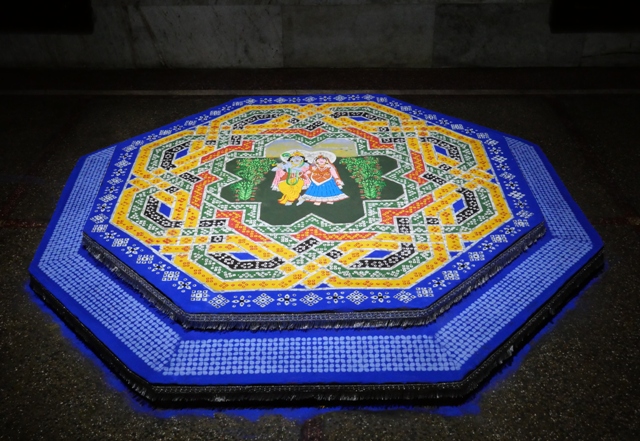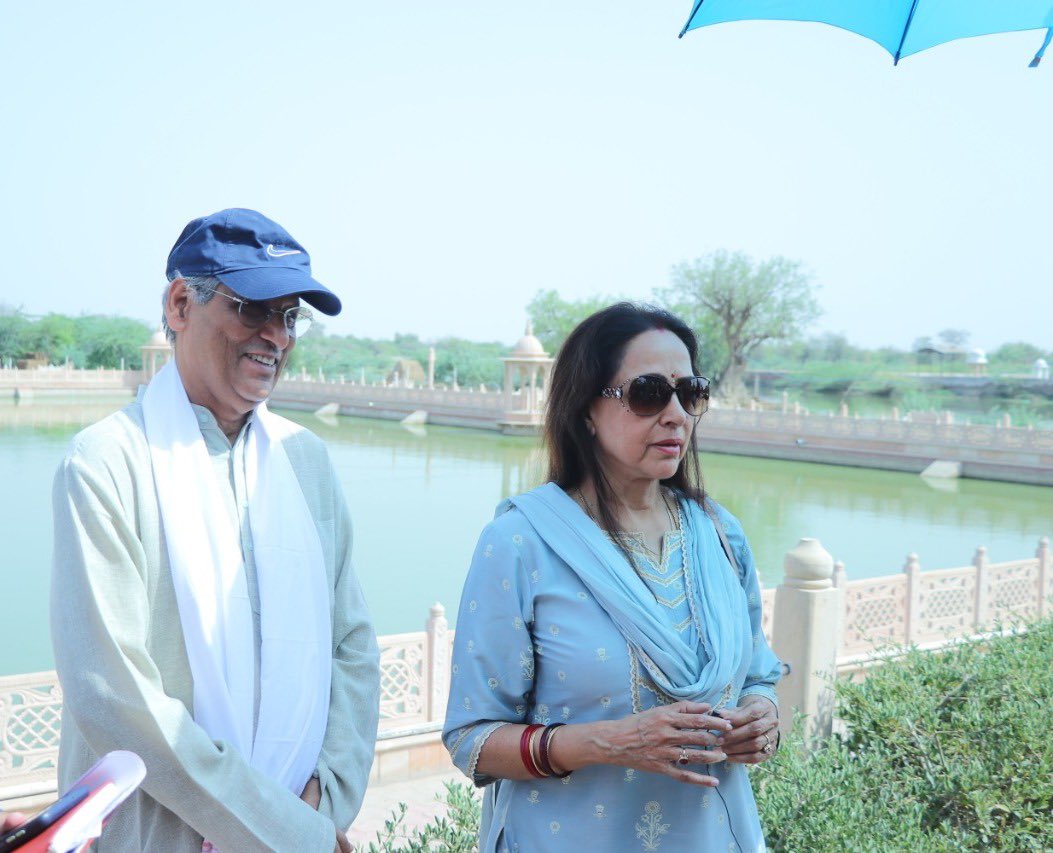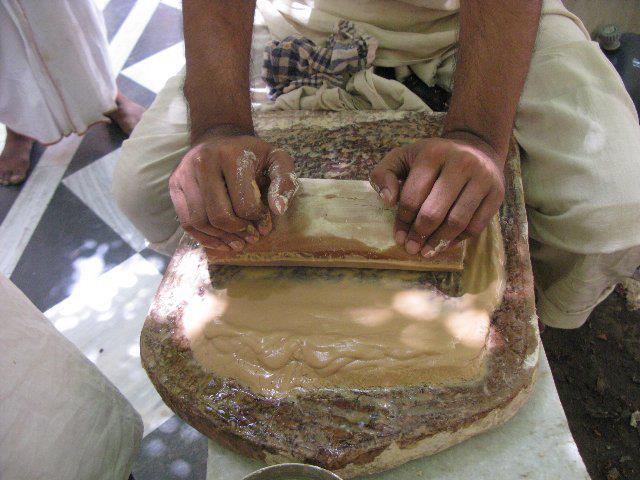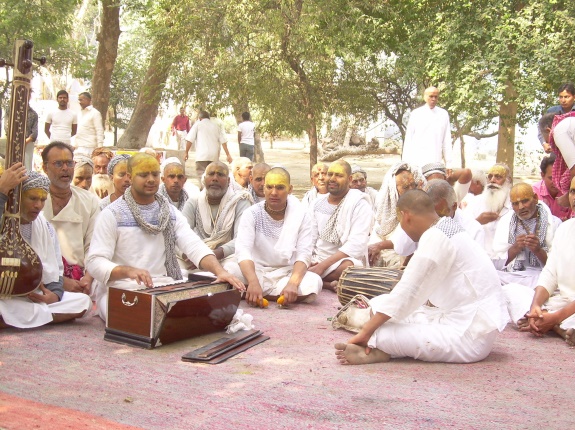The Bhatt Ji family’s contributions to Saanjhi art, Braj Bhasha literature, and devotional culture stand as a testament to the preservation and evolution of traditional Indian art forms. Their legacy continues to inspire researchers and art lovers alike, making their work an invaluable cultural heritage.
By Dr. Rajesh Sharma
2024.09.29 (Vrindavan Today News): Vrindavan holds a unique place in the vast realm of literature, art, and culture. The contributions of this sacred land have provided new subjects for researchers in the scholarly world. To uncover these contributions, one only needs to turn the pages of its glorious past. While the residents of this divine land will certainly call it special, there is another perspective that reveals Vrindavan’s uniqueness. This perspective comes from a popular proverb in the nearby regions, where people, having gazed at Vrindavan with awe, found themselves speechless in response. This sentiment towards Vrindavan gave birth to the local saying, “बिन्दावन बनि गयौ” , which means “perfectly organized” or “flawless.”
This expression of Vrindavan, which has become an established proverb, refers not only to the beauty of its temples, ghats, kunds (ponds), flora, and the Yamuna River but also to the new spiritual awakenings provided by its saints and acharyas through literature, music, and art. These awakenings have turned every facet of life into a celebration. The diversity of festivals in Vrindavan is a remarkable gift from its devotional traditions. For generations, the small alleyways and groves of this city, filled with temples, have been the foundation of festivals, spreading joy among its people. Even during the twilight of Pitru Paksha (the fortnight dedicated to honoring ancestors), the enchanting art of Saanjhi and the melodic verses accompanying it, inspired by Krishna’s tales, mesmerize the human heart.
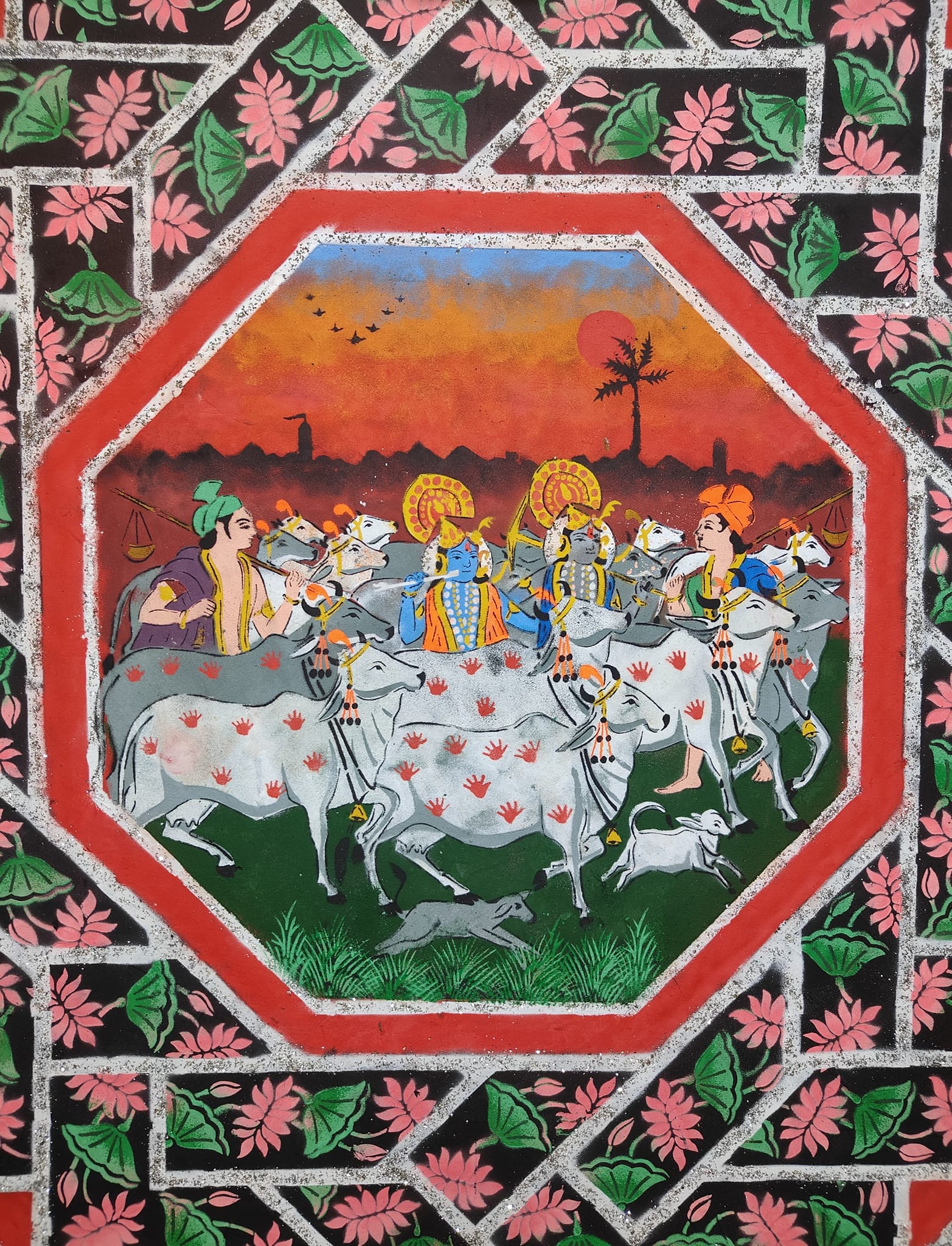
When discussing the Saanjhi festival, no conversation is complete without mentioning the Bhatt Ji temple in Vrindavan. This family has preserved every aspect of Saanjhi art for generations with a devotion that has made it a priceless treasure of Indian culture. Historical texts are filled with praises for this family’s illustrious legacy.
After Goswami Shri Gadadhar Bhatt, in the 16th century, this lineage produced many distinguished acharyas. These scholars not only nurtured Saanjhi but also contributed significantly to Braj Bhasha literature and culture across different eras. Goswami Shri Gadadhar Bhatt had a deep personal connection with Srila Jiva Goswami, one of the six Goswamis of the Chaitanya Mahaprabhu tradition. In fact, Jiva Goswami’s legal will (his “Sanction Letter”) was written by Gadadhar Bhatt Ji as per his instructions. This letter, preserved in the Vrindavan Research Institute, stands as a testament to that historical association.
Around 1643 CE, Acharya Vallabh Rasik Ji of this family composed a widely celebrated “Maanjha” (a style of poetry associated with Saanjhi). His exceptional literary work earned him a place among the prominent poets of his time:
चंद जू कौ छन्द, छप्पै नाभा औ बेताल जू की, केसव कौ कवित्त, दोहा विहारी के सुगांस कौ। वल्लभ रसिक की मांझ, गिरधर की कुंडलियाँ, वाजिद अरिल्ल सो है अति सै प्रकास कौ।। रसरास रेखता अरू घात बीरबल जू की, तुलसी की चैपाई औ श्लोक वेद व्यास कौ। भनत गुपाल ये जहान बीच जाहर है, सूर कौ पद औ धुरपद हरिदास कौ।।
This stanza highlights the poetic brilliance of Vallabh Rasik Ji, who was known for his work in different forms of poetry like “Kavitt” and “Kundaliya.” Acharya Govardhan Bhatt Ji Maharaj, another prominent figure in this family, was not only an expert in the art of Saanjhi but also a prolific writer. His rendition of the Srimad Bhagavatam (a sacred text) was deeply touching, leaving listeners spellbound. Numerous ancient texts bear witness to his extraordinary talent. His daily practice of narrating the Bhagavatam and his reluctance to leave Vrindavan are well documented. Poet Brajapati and Harlaal described him as:
सीतल सुगन्ध सुद्ध प्रगट पराग फल्यौ, वृन्दावन सरमें सरोज कौ प्रकासु है श्री भट्ट जी गोवर्धन जू ब्रज में विराजै आप,
These lines celebrate Govardhan Bhatt Ji’s deep devotion to the Srimad Bhagavatam and his distinct personality. It is said that even during the passing of his son, he did not break his daily practice of narrating the sacred text. Contemporary accounts note:
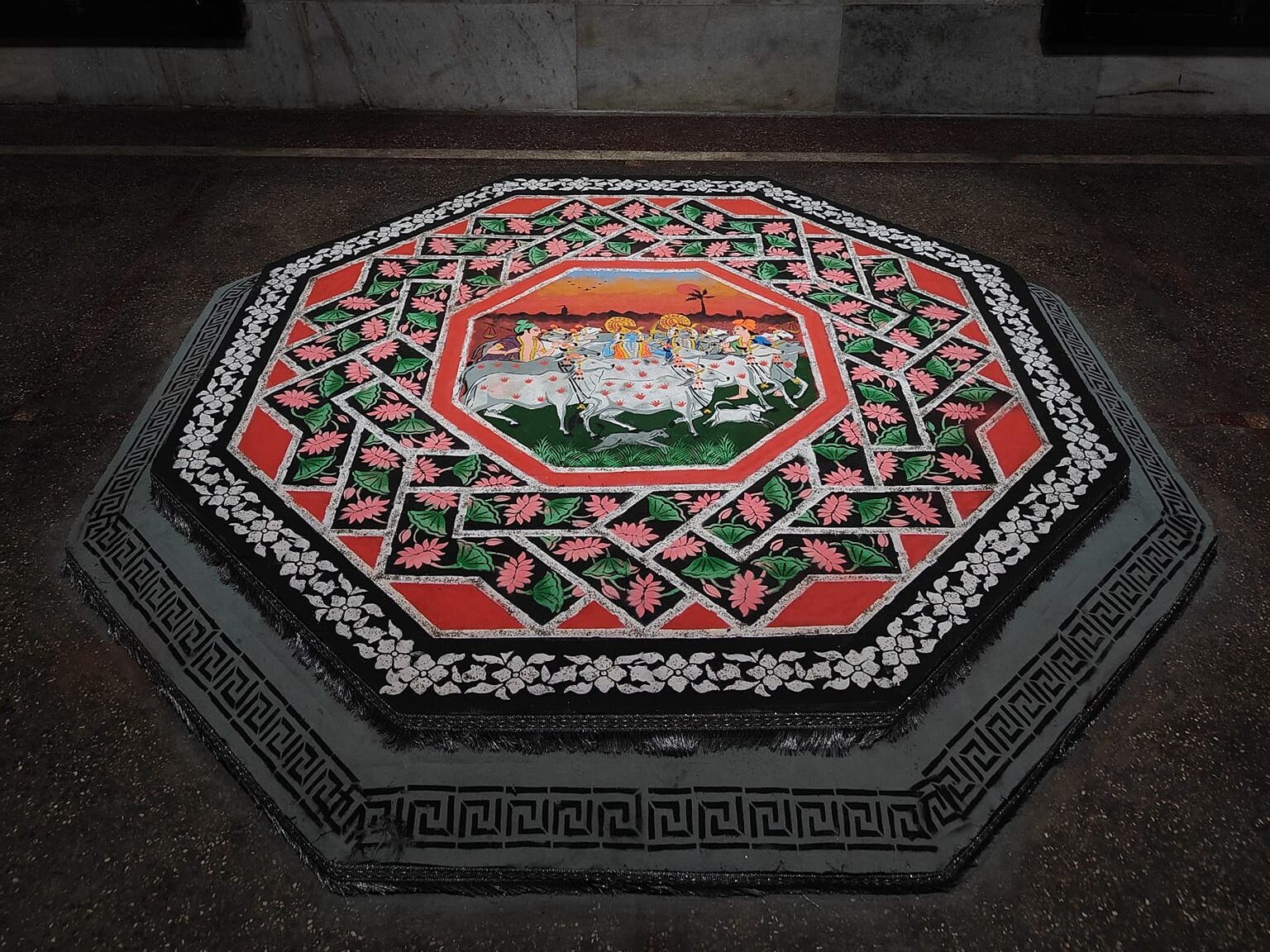
तिनकी भाव भगति कौ,
सकल सराहत हैं नर नारी।
पुत्र शोक में नित्य नेम की,
कथा बंद नहीं कीनी।।
आये अश्रु न आंखिन में,
अति भगति भाव भीनी।
नित प्रति पाठ भागवत कौ,
निसि धरि दीपक जे करही।।
Even in his son’s passing, Govardhan Bhatt Ji’s unwavering faith and devotion to the Bhagavatam moved everyone around him. His daily recitals near Bheem Kunj in Vrindavan were also recorded by Chandra Lal Ji, a Goswami of the Radha Ballabh sect, in his text Vrindavan Prakash Mala.
Other notable members of this family include Mannulal Bhatt Ji, Madhavlal Ji, Nand Kumar Bhatt, Shreelal Ji, Chhuttan Bhatt Ji, and Madhusudan Ji. An incident involving Nand Kumar Bhatt Ji highlights his integrity. When Gokuldas Parikh, the builder of the Dwarkadhish temple in Mathura, offered him a throne made of 125,000 gold coins in exchange for reciting a single verse, Nand Kumar Bhatt Ji refused. His response, “Do you weigh words against wealth?” demonstrated the remarkable moral fiber of the Bhatt Ji lineage. A poetic rendition of this event is as follows:
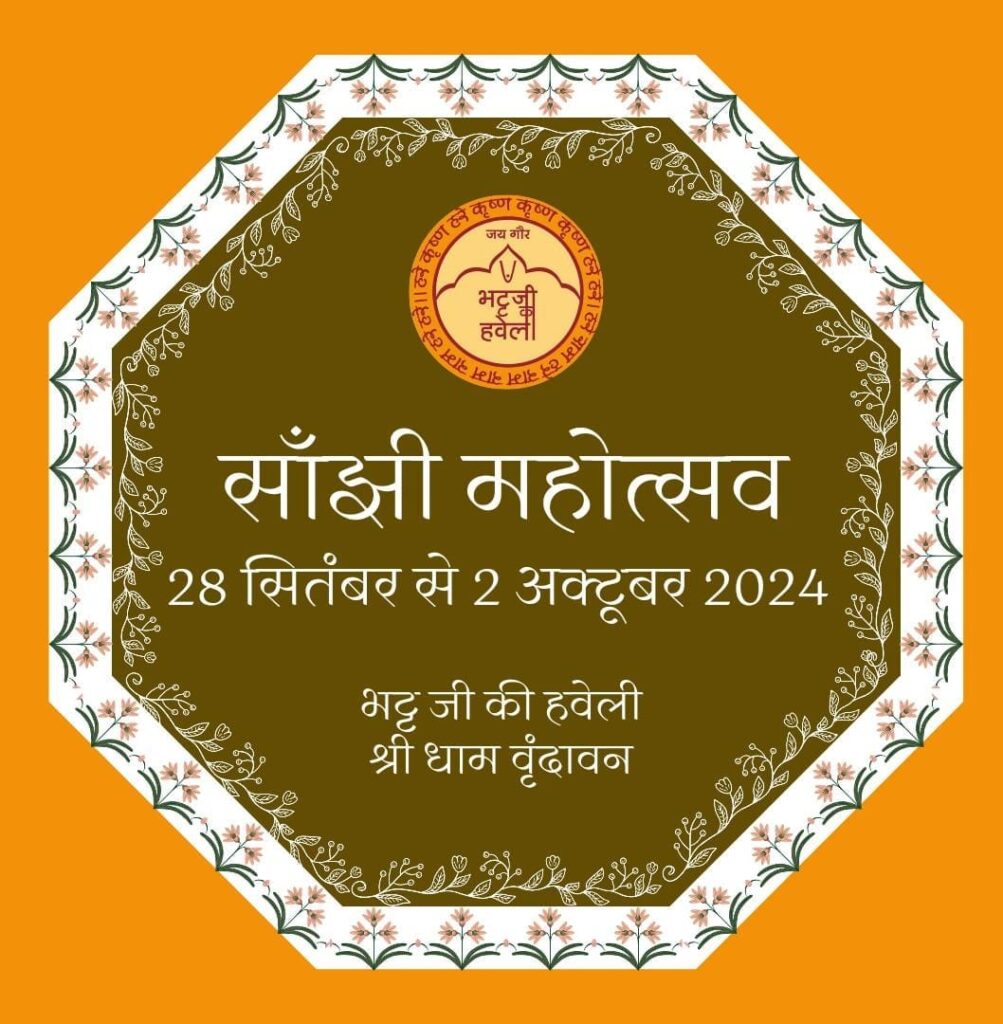
वर्षोत्सव नित भजन कथा कहि,
सबकों करत सनाका।
तिनसों पारिख कही हमारे,
कथा मधुपुरी कहिये।।
गये नहीं यह की इहांही सुनि जैये जो चहिये।
दियो लोभ बहितेरौ परि नहिं, कथा मधुपुरी बांची।।
Legacy of the Bhatt Ji Family
From the 16th century to the present day, this family has significantly contributed to the literature, music, and art of Braj, especially related to Saanjhi. Their work has been a source of inspiration for both national and international scholars. Whether it is the chronicles of Hindi literature or the works of distinguished researchers like Mishra Bandhu and Vishwanath Vasu, this family’s contribution is widely recognized.
The Saanjhi art created by this family is remarkable for its intricate use of color combinations, geometric designs, and ornamental vines, particularly in the depiction of Radha-Krishna’s divine pastimes. Whether it’s portraying the radiant moonlight of Sharad Purnima or capturing the essence of monsoon with lightning in the forest scenes of the Raas Lila, the craftsmanship is mesmerizing. The depiction of Krishna returning with the cowherd boys, leaving behind clouds of Braj dust, is both evocative and enchanting. The meticulousness of the art, along with the family’s traditional musical renditions, has turned the Bhatt Ji lineage into a living university of devotion and knowledge, enriching every era with new innovations in art and literature for over 450 years.
The Bhatt Ji family’s contributions to Saanjhi art, Braj Bhasha literature, and devotional culture stand as a testament to the preservation and evolution of traditional Indian art forms. Their legacy continues to inspire researchers and art lovers alike, making their work an invaluable cultural heritage.
This year the Saanhi Mahotsava is being organized at Bhtatt ji Mandir is from 28th September to 2nd October, 2024.


